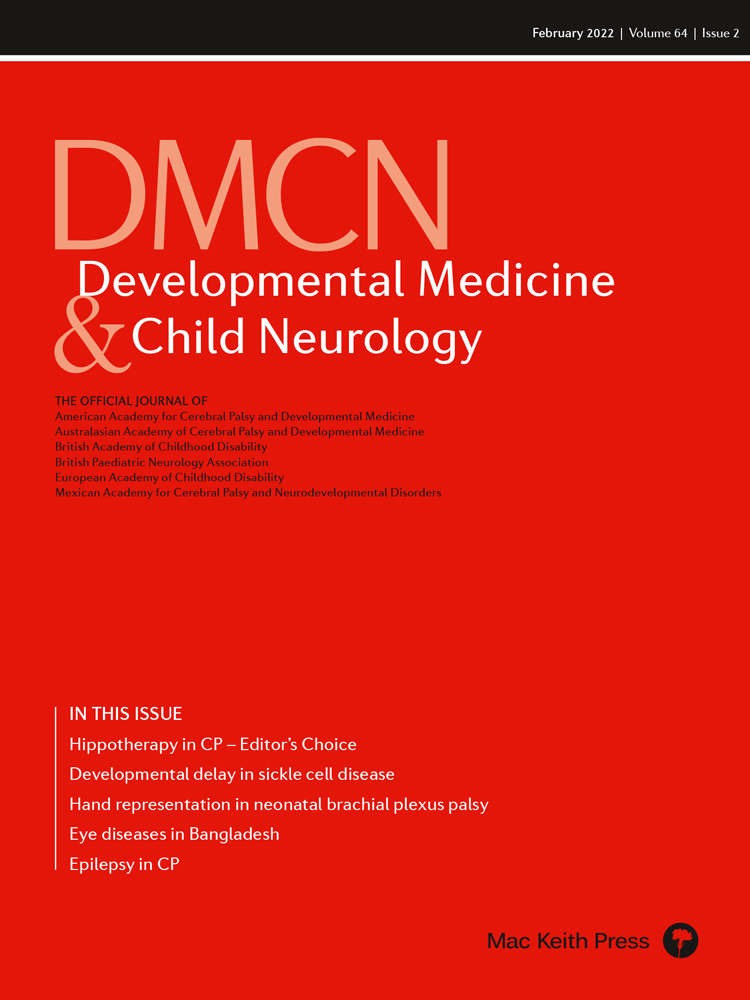The impact of sensorimotor impairments on developing hand representation: an insight from neonatal brachial plexus palsy
Abstract
This commentary is on the original article by Van der Looven et al. on pages 183–191 of this issue.
Sensorimotor experience plays a fundamental role in the development of body representation.1 Yet paradoxically, little research has explored how early sensory deprivation impacts this developmental process. We therefore look to children with sensorimotor impairments to better understand how altered experience during childhood may drive or constrain body representation. Neonatal brachial plexus palsy (NBPP) is a perinatal birth injury characterized by sensory and motor impairments of the upper limb. Affecting 1.74 per 1000 births, typical cases present with deficits in shoulder abduction, elbow flexion, and hand function.2 These abnormalities result in atypical movement patterns and reduced proprioceptive input, leading to everyday functional impairments. Whilst mild cases of NBPP often resolve spontaneously within a few months, many children experience profound weakness and long-term functional deficits. A comprehensive understanding of these sensorimotor deficits is therefore crucial to inform clinical rehabilitation practices and maximize functional outcomes.
Van der Looven et al.3 provide a valuable insight into the impact of early sensorimotor impairments on hand representation. Using an established paradigm in which participants point to known landmarks on the hands,4 they find a clear distinction in how children with NBPP represent their affected and unaffected hand. Both children with NBPP and controls underestimated their finger length and overestimated their hand width, revealing a distorted representation whereby hands are perceived as shorter and wider. This is a common phenomenon described in previous studies with typically developing controls.4 In the NBPP group however, finger length underestimation was significantly reduced in the affected hand, relative to the unaffected hand, suggesting they either had a more accurate representation of the affected hand, or a more distorted representation of the unaffected hand. Unfortunately, it remains unclear whether the differences observed in NBPP are driven by abnormal representation of the affected or unaffected hand, compared to controls. A key point for future work will be to understand how these representations compare to children without sensorimotor impairments.
Van der Looven et al.3 suggest these representational differences are driven by abnormal representation of the affected hand and modulated by the severity of sensorimotor impairments. Children with increased manual ability revealed distorted patterns of hand representation similar to those previously observed in typically developing controls.4 Curiously, hand representation in children with poorer manual ability was less distorted, resembling actual hand size more closely. These findings add to a recent body of work exploring how sensory changes during childhood scaffold emerging body representations. Future studies should tease apart the relationships between hand representation, sensorimotor deficits, and manual ability.
In late childhood, critical changes in hand representation and motor control coincide with the development of multisensory integration, specifically vision, touch, and proprioception.5 Motor deficits in NBPP, however, result in impaired touch and proprioception from birth. We can therefore pose the question: how do sensorimotor impairments from birth affect the development of hand representation across childhood? Van der Looven et al. found representation of the unaffected hand in NBPP mirrored the characteristically distorted patterns observed in typical development, earlier than controls.3 Increased unilateral use of the unaffected arm, compensating for motor deficits in the affected arm, could plausibly explain this accelerated development. However, this finding is merely speculative due to sampling limitations. Further research with 6- to 8-year-olds is needed to confirm these suggestions. Moreover, we suggest including younger children to further explore the impact of sensorimotor impairments on changes in hand representation in infancy and early childhood.
Whilst we can only speculate about what is driving the representational differences in children with NBPP, this study emphasizes the importance of early intervention, targeting both sensory and motor impairments. More studies are needed to fully understand the relationships between body representation, sensorimotor experience, and manual ability throughout childhood.




